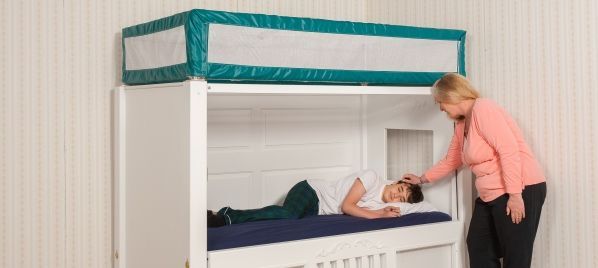
When it comes to caring for individuals with special needs, every aspect of their environment must be carefully considered, including their beds. Special needs beds are designed to provide additional support and safety for people with various physical or cognitive disabilities. Proper maintenance and regular care of these beds are crucial to ensuring their functionality and longevity. In this post, we will explore some tips on how to effectively maintain and care for your special needs bed.
Regular Cleaning
Just like any other bed, a special needs bedshould be cleaned regularly to promote hygiene and prevent the buildup of dirt, dust, or allergens. Follow the manufacturer's instructions for cleaning specific bed materials, such as metal frames, wooden panels, or fabric surfaces. Use a mild detergent and warm water to clean the bed components thoroughly. Make sure to dry all areas properly after cleaning to prevent mold or mildew growth.
Check Bed Components Regularly
It is important to inspect the various components of your special needs bed regularly. Check for any loose bolts or screws in the frame or headboard that may compromise stability. Ensure that all side rails, if applicable, are securely attached and functioning properly. Inspect the mattress for signs of wear and tear, such as sagging or lumps; consider replacing the mattress if necessary.
Maintain Gesture Control Mechanisms
Many modern special needs beds come with gesture control mechanisms that allow users to adjust the bed's position easily. If your bed has gesture control features, ensure they are well-maintained and fully operational by regularly checking connections, wires, and buttons from the control unit all the way down to the actuator under the mattress platform.
Lubricate Moving Parts
Special needs beds often have moving parts for adjustments like height elevation or tilt positioning. To keep these mechanisms working smoothly without squeaks or stalls over time, lubrication is key. Follow manufacturer guidelines regarding the type of lubricant recommended for these specific parts, such as actuators or hinges. Be sure not to use any petroleum-based products that may damage the bed components.
Repair or Replace Damaged Parts
Over time, certain components of your special needs bed may get damaged or worn out due to regular use. It is crucial to address any issues promptly to maintain the bed's functionality and ensure the individual's safety. Contact the manufacturer or authorized dealer for assistance in sourcing replacement parts and necessary repairs.
Ensure Proper Bedding Usage

Along with the maintenance of the bed itself, it is essential to use appropriate bedding that matches the special needs bed's specifications. Using ill-fitting sheets or mattress protectors can interfere with the functionality of the bed and compromise comfort and safety. Make sure to choose bedding designed for special needs beds, taking into consideration factors such as size, material, and ease of cleaning. Additionally, check for any signs of wear and tear in the bedding regularly and replace items as needed.
Preventative Measures for Accidents or Spills
Accidents can happen, especially when it comes to special needs individuals who may have difficulty controlling bodily functions or are prone to spills while consuming food or drinks in bed. To prevent damage to the bed components and ensure hygiene, consider layering waterproof mattress pads or protectors between the mattress and sheets. These protectors provide an extra layer of defense against spills, stains, and odors while maintaining comfort for the user. In case of accidents or spills, promptly clean and sanitize affected areas using the appropriate cleaning solutions recommended by the manufacturer.
Proper maintenance and care of special needs beds are vital to ensuring their longevity while providing comfort and safety for individuals with disabilities. Regular cleaning, inspecting all bed components, maintaining gesture control mechanisms, lubricating moving parts, and promptly repairing or replacing damaged parts are all essential aspects of caring for these specialized beds.
Following these tips will help maintain the functionality and durability of your loved one's special needs bed, offering them the comfortable and supportive sleeping environment they deserve.
Here are some other articles related to your search:



(0) comments
We welcome your comments
Log In
Post a comment as Guest
Keep it Clean. Please avoid obscene, vulgar, lewd, racist or sexually-oriented language.
PLEASE TURN OFF YOUR CAPS LOCK.
Don't Threaten. Threats of harming another person will not be tolerated.
Be Truthful. Don't knowingly lie about anyone or anything.
Be Nice. No racism, sexism or any sort of -ism that is degrading to another person.
Be Proactive. Use the 'Report' link on each comment to let us know of abusive posts.
Share with Us. We'd love to hear eyewitness accounts, the history behind an article.